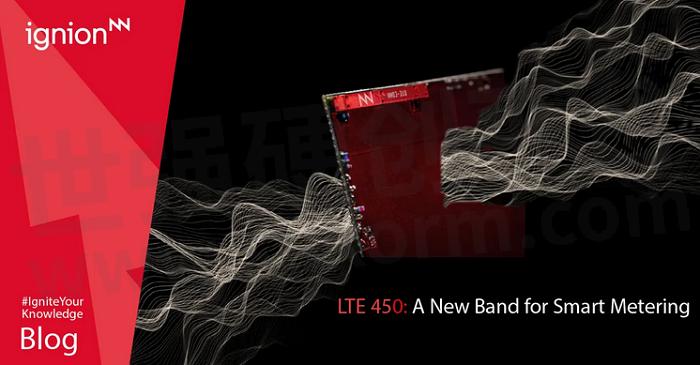LTE 450: A New Band for Smart Metering

Introduction to low frequency communications
As the number of devices requiring data transmission and reception grows, the IoT sector has traditionally relied on cellular bands, like NB-IoT or LTE-M, for communication. However, as wireless technologies advance, cellular network providers are increasingly exploring higher-frequency solutions. This shift has made the lower frequency ranges, such as 450MHz, more accessible for alternative uses. As a result, utilities and various companies are now tapping into these lower frequencies for specialized applications.

The benefits of using low frequencies such as 450 MHz
Working at low frequencies can bring benefits. The following highlights the three most important ones:
Robustness against obstacles – Improved obstacle penetration ensures that the signal can travel through walls, trees, buildings, and other objects with minimal loss. This allows it to cover greater distances more effectively.
Coverage in remote places – Thanks to its long-range capabilities low frequency can provide connectivity in places, such as for applications in transportation industries, fleet management, logistics, oil and gas extraction, mining, and agriculture located in remote locations.
Lower power consumption – This can increase the battery life of a device, by reducing its power consumption. Fewer battery changes mean less waste and directly affect the health of the planet.
There is something that must be considered before starting a project using low frequencies:
Lower frequencies mean bigger ground planes – As we go down in frequency, the electrical size of the antenna decreases, for this reason, if we want to develop a solution that operates at low-frequency bands, the antenna is going to need bigger dimensions to preserve good performance in terms of radiation efficiency.
Important things to consider when dealing with low-frequency designs
One of the most popular applications currently using the 450MHz frequency band is smart metering.
A typical use case for a smart meter device is a multi-board/modular configuration, with the communication board separated from the main one but connected through a certain type of connection. With this configuration, you can take advantage of this to locate it in the position that better encourages the current surface propagation to increase the ground plane.
At the end of this kind of multilayer project, it is very important to pay attention to the surface currents. The location of the connection pins will define the surface currents and these are going to increase the length of the ground plane (electrically).
“The more intensely surface currents propagate along all the ground plane, the more efficient the antenna will be.”
- +1 Like
- Add to Favorites
Recommend
- AI & Machine Learning: Simplifying IoT Antenna Integration with Virtual Antenna® Technology
- Revolutionary Virtual Antenna® Solution for Revolutionary Ski Boot Design
- NeuronicWorks Partners with Ignion to Accelerate IoT Device Designs with Virtual Antenna® Solution
- Antenna Intelligence Cloud™ Simplifies Designs with Multiple Antennas
- Virtual Antenna®, the clear winner over PCB trace in reducing hardware iterations
- Safer Journey Awaits: Igniting Road Safety with Virtual Antenna® Technology
- Getting the Best Cellular IoT Antenna Performance: Why It’s Better to Focus on the Specific Bands in Your Region
- Ignion Announces the Smallest Virtual Antenna™ at the Wi-Fi World Congress Which is with a size of only 3x2x0.8mm
This document is provided by Sekorm Platform for VIP exclusive service. The copyright is owned by Sekorm. Without authorization, any medias, websites or individual are not allowed to reprint. When authorizing the reprint, the link of www.sekorm.com must be indicated.















































































































































































































































































































































































































































































































































































































































































































































































































































